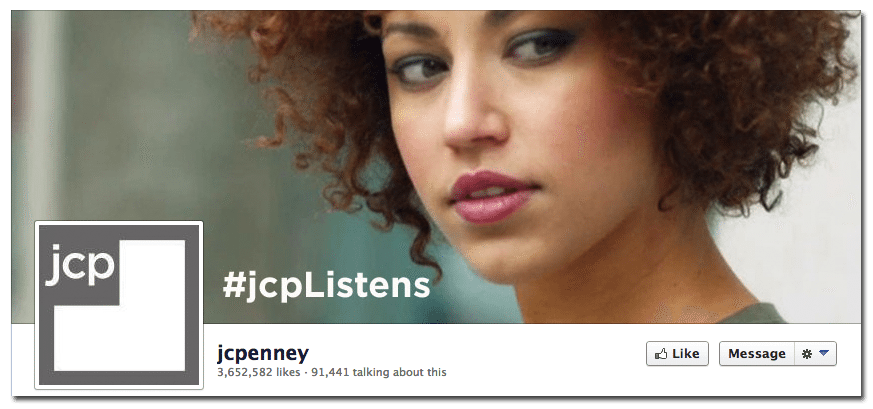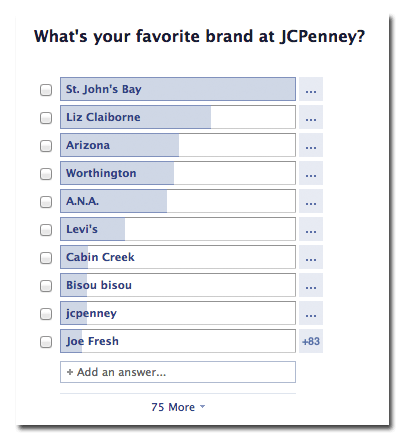Ever since changing the layout, pricing system and products carried by their stores, JCPenney has alienated many of its previously loyal customers. The company’s execs are well aware of this, and this week they began a number of measures designed to draw feedback from their customers in hopes of finding workable solutions.
The #jcpListens campaign launched on Facebook with a redesigned cover photo, a poll asking users what brands they love and want to see make a return, and an open thread encouraging users to leave their likes and dislikes in terms of the changes the retailer has made.
The thread was spurred by a video apologizing for the brand’s missteps and asking former customers to give them another shot. The video itself has gotten thousands of likes and shares, and has prompted thousands of comments from past and current customers.
This campaign from JCP has gotten tons of engagement, a promising sign for them, and they’re conducting it well. Here’s why it’s working.
Giving customers direction for their feedback
With the poll, JCP is asking users for feedback concerning one facet of the changes they made. Instead of asking questions about pricing, store layouts and brands being carried, they’re focusing on just the brands. They’ve also narrowed the scope of the question down by asking “What are your favorite brands?” and then posing that question in the form of a poll, making it easier to analyze. It’s also easier for users to simply cast their vote instead of having to type up a paragraph-length comment, which improves the chances that they’ll participate.
Genuine appreciative responses from the team are visible to everyone
The JCP social reps are also doing an excellent job of letting users know that their feedback is being seen and noted. Thanks to Facebook’s new reply to comment feature, they’re able to directly reply to user’s concerns, thank them for their input and then assure them that they’ve passed their concern along to the rest of the team. Just that simple assurance shows that the brand is willing to listen and use their shoppers’ opinions as part of their changes going forward. With this simple, genuine response, they’re also indirectly encouraging others to share their thoughts.
‘Likes’ help give direction
When much of the activity around the campaign has died down, the JCP execs will be able to prioritize their issues by glancing at the feedback given and noting which complaints had a substantial number of ‘likes.’ If a complaint has a lot of ‘likes,’ chances are many people have been affected by it and are looking for some resolution.
Have you seen other brands exhibit great CRM through a similar campaign? Share it with us!

